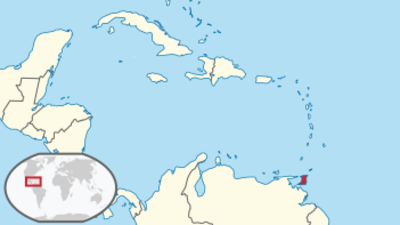Where is Trinidad and Tobago Located?
Where is Trinidad and Tobago located on the map? Trinidad and Tobago is an independent nation located in North America. Check out the following images to see location of Trinidad and Tobago on maps.
Trinidad and Tobago Location in World Map
Trinidad and Tobago is an island state that consists of these two islands: the larger Trinidad is only 11 kilometers from the coast of Venezuela and thus South America, the smaller Tobago is north of it. With 4825 square kilometers, Trinidad is almost 16 times the size of Tobago with its 303 square kilometers.
The islands are the southernmost of the Lesser Antilles archipelago. They are not of volcanic origin like the other islands in the Lesser Antilles, but were once part of the South American mainland. Geologically the islands are the continuation of the Venezuelan coastal cordillera.
Map of Trinidad and Tobago
Mountains
Three mountain ranges run through Trinidad from east to west. The northernmost and highest is the Northern Range, which also includes the country’s highest mountain, the Cerro del Aripo. At 941 meters, it is more of a hill, as its name suggests, because Cerro means hill. The mountains are covered by forest. The west of Trinidad is formed by a wide bay, the Gulf of Paria. The northern peninsula is called the Chaguaramas. You have five small islands in front of you, the Bocas Islands.
Tobago is located around 30 kilometers northeast of Trinidad. A small mountain range also runs over Tobago. Its highest point is Pigeon Peak at 576 meters. The south-west is flat, the north rocky. The coast there is very rugged because it is exposed to the wind.
Climate
It is warm all year round in Trinidad and Tobago. The climate is tropical – always humid. During the day it is on average 30 degrees, at night the thermometer drops to 20 degrees. The average annual temperature is 26 degrees. From June to December it rains more than from January to May. Trinidad and Tobago are outside the hurricane zone.
Trinidad and Tobago Facts
| Size | 5,128 km² |
| Residents | 1.21 million |
| Language | English |
| Capital | Port of Spain |
| Longest river | – |
| Highest mountain | Cerro del Aripo (941 m) |
| Currency | Trinidad and Tobago dollars |














































